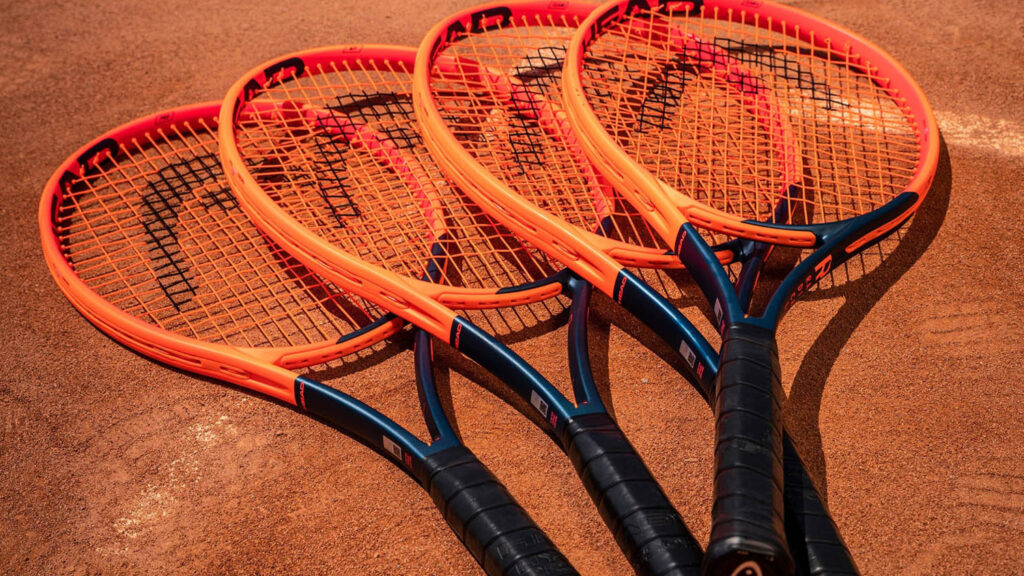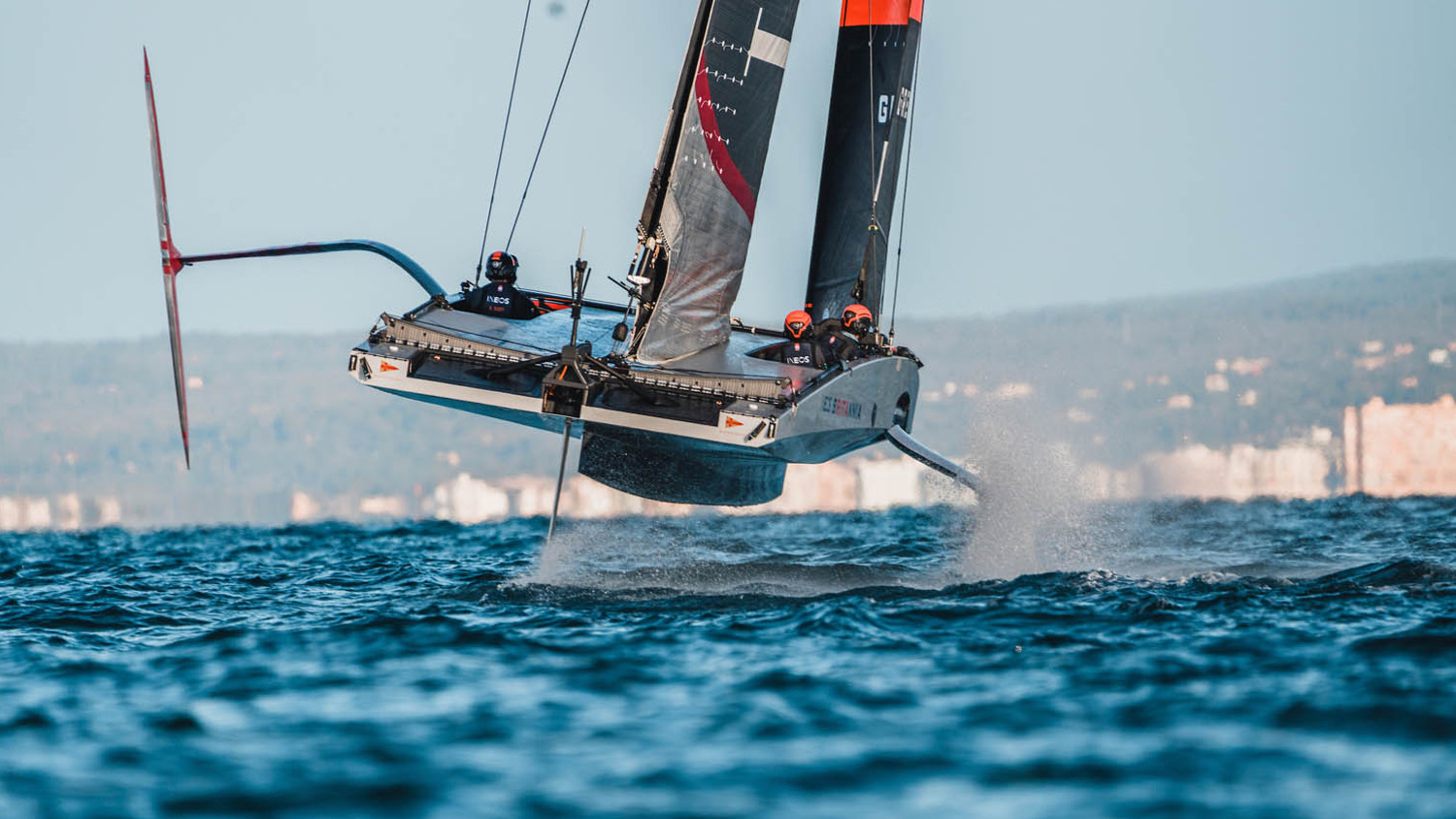DEVELOP3D takes a look at sporting equipment designed to boost an athlete’s game, from the pool to the padel court
Fancy, hi-tech gear is creating a stir in the sports industry, pushing boundaries while prioritising athletes’ comfort, style and confidence. From high-tech swimsuits to supercharged golf balls, manufacturers are constantly pushing design boundaries in order to help athletes perform better. Here is some of the latest kit currently under starter’s orders.

Kask
Kask has officially launched its new high-end helmet, the Elemento. This was worn in the Giro D’Italia cycling competition by the Ineos Grenadiers riders, the team led by 2023 runner-up, Geraint Thomas.
Elemento gets its name from its use of carbon, specifically Kask’s Fluid Carbon 12, an injection-moulded composite technopolymer containing 30% carbon fibre and 70% reinforced plastic.
Kask says its design team focused on four key areas for the helmet: safety, comfort, performance and design.
The Elemento features an injection-moulded thermoplastic shell consisting of two parts. This shell is designed to enhance strength during impacts, while a reduction in EPS thickness in certain areas allows for improved airflow and ventilation.
The helmet also boasts 3D-printed ‘Multipod’ helmet pads, which compress and move upon impact. Kask says this technology will better withstand linear and rotational impacts, regardless of which direction they come from, keeping a rider safer in case of collision.
Combined with Fluid Carbon 12’s increased resistance to stress and heat, plus the geometric, open-cell 3D-printed pads, smaller holes are needed for ventilation, which Kask says boosts the helmet’s allimportant aerodynamics.
According to Kask, its team utilised the same NablaFlow Aerocloud software for CFD testing that is used by the Ineos Grenadiers team. This software allowed it to simulate and test thousands of designs, while its use of HPC computing gave it faster testing and greater confidence in prototype performance.
Arena
Headquartered in Tolentino, Italy, Arena is one of the most recognised swimwear companies in the world. Its mission is to produce premium swimwear, equipment and accessories that fit like a second skin while giving wearers a winning edge.
Recognising the need to streamline the prototyping process and to reduce carbon emissions, Arena CIO Andrea Mazzanti decided to implement a 3D printing model for hard goods such as swimming goggles. 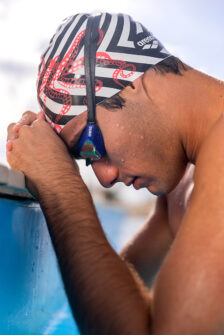
By adopting the Solidworks 3DExperience Works platform, which includes Solidworks, 3D Sculptor and Simulation, Arena’s designers get the real-time feedback they need to create, test and optimise models efficiently. They can create prototypes on in-house 3D printers and quickly iterate their designs.
As Mazzanti explains, the 3DExperience platform has helped create an ecosystem that connects a product’s stakeholders with its designers.
The integration of 3D technologies, such as Solidworks and Simulation, has enabled Arena to reduce its prototyping cycle by 70%, resulting in decreased time to market and improved product quality with fewer defects.
In addition to this significant reduction in prototyping time, Arena says the shift to digital simulations has also had a positive impact on sustainability, because eliminating the need for multiple physical product samples and third-party samples has significantly reduced the company’s CO2 emissions.
Looking ahead, Mazzanti believes that digital technologies will continue to play a crucial role in product development at Arena, particularly when it comes to capturing images, measuring and tracking the performance of fabrics in water and exploring the potential of smart fibres.
This transformation of Arena’s workflow, where a single environment now enables designers to exchange information quickly, has greatly enhanced collaboration and improved overall efficiency, while ensuring that performance in the pool never misses a stroke.
Inneos Britannia
Additive manufacturing and metrology specialist Renishaw has renewed its partnership with the British sailing team INEOS Britannia as it prepares for the 37th America’s Cup.
As an official technical supplier, Renishaw will provide additive manufacturing and position measurement expertise in support of INEOS Britannia’s quest to become the first British team to win the prestigious trophy.
The America’s Cup is the world’s oldest international sporting trophy, dating back to 1851. INEOS Britannia, led by Sir Ben Ainslie, is the first British team to compete for three consecutive challenges in over a century. The Challenger Selection Series will take place in September 2024, where teams will compete to determine who will face the defending Emirates Team New Zealand in the final match starting on 12 October.
The competition will feature AC75s, advanced sailing boats capable of reaching speeds four times faster than the wind. INEOS Britannia’s 75-foot foiling monohull, named Britannia, showcases British technology and can reach speeds of up to 50 knots (over 60 miles per hour).
Renishaw is on hand to provide the team with products and expertise in position measurement, manufacturing process control, Raman spectroscopy and AM support – perfect for optimising the design and manufacture of lightweight structural components for the boat.
Renishaw’s Spanish subsidiary, which has an AM solutions centre in Barcelona, will also provide support to the INEOS Britannia team during their time testing in Spain. Since sustainability is a key focus and requirements around it are clearly expressed in the America’s Cup rules, INEOS Britannia will use recycled carbon fibre to reduce its need for new carbon fibre.
Head
Over the years, tennis equipment has evolved significantly from those original wooden rackets with natural gut strings. Today, composite rackets offer enhanced power, strength and lighter weight, improving the overall playing experience.
Engineers and designers in this field need an acute understanding of the intricate dynamics involved in ball-racket collisions. For Head, simulation has emerged as the most effective way to tackle this challenge. 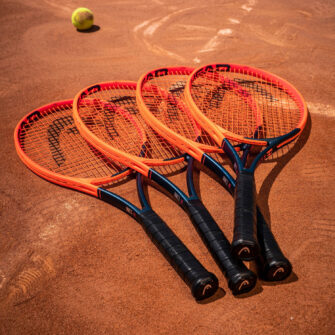
Design optimisation for tennis rackets involves numerous input parameters and countless combinations of these, including fibre type, fibre area weight (FAW), angles, component compounds and placements. Additionally, various optimisation variables and objective parameters also need to be taken into account, such as stiffness, strength, impact behaviour and production costs.
Together, there may be as many as 20 million possible combinations of variables and parameters to consider. According to the engineering team at Head, building and testing a prototype for each and every combination could take 2,750 years.
Recognising the impracticality of real prototyping, they turned to Ansys OptisLang as a non-linear optimiser. This allowed them to generate design iterations and automate Ansys Mechanical simulations in a batch process in order to identify optimal solutions.
The objective of optimisation here is to find the lightest structure with the highest stiffness and strength while also meeting other design constraints. Head’s engineers can evaluate approximately one million design concepts in about a week to enhance composite structure design.
Meeting regulations and quality requirements has also become easier, as Head has developed tests that every racket must pass before entering the market, including stiffness and strength measurements. For instance, a racket must be able to withstand a drop test onto concrete without sustaining any damage.
Automatically identifying the most critical parameters empowers Head’s engineers to analyse numerous design alternatives and optimise performance to unprecedented levels.
![]()
Iconic Padel Court
The Iconic Padel Court, designed by Pininfarina in collaboration with fellow Italians from the sports experience company Iconic, represents a ground-breaking advancement in court design.
Pininfarina, renowned for its century-long expertise in automotive, product and architectural design, has ventured into the realm of sports to create a padel court that aims to merge aesthetics and technology to optimise performance and wellness.
Based in Turin, Pininfarina says its team has reimagined the player’s experience and the playing environment by introducing an innovative and customisable interface with modular features.
The court integrates advanced technologies that enable players to review their actions and movements, gathering valuable data to enhance their game performance.
The design of the Iconic Padel Court adheres to standards set by the International Padel Federation. An installation can be freestanding or fixed to the ground, according to client requirements.
The court incorporates cutting-edge materials and finishings, including a fiberglass coating, laminated tempered glass with concealed ground fixing and faux leather protectors. LED lighting, displays and cameras are seamlessly integrated into the structure. Advanced technological systems are implemented, such as net tending poles that function as access hubs with touch displays and voice assistants.
Furthermore, the court features an automatic tensioning system for the game net, recharging stations for electronic devices and cameras that analyse movements to provide in-depth game analysis. It also includes a cooling and heating system and anti-fog technology for the perimeter glass, ensuring optimal player comfort in various weather conditions.
Wilson
Long associated with the game of basketball, Wilson Sporting Goods Company continues to revolutionise the sport through digital innovation.
Working with General Lattice, EOS and DyeMansion, Wilson developed the first 3D-printed airless basketball prototype.
The project drew on the expertise of each company involved. General Lattice’s computational design services, provided through its GL Labs enterprise solutions team, streamlined the design and iteration process by leveraging the company’s computational design tools and workflows. 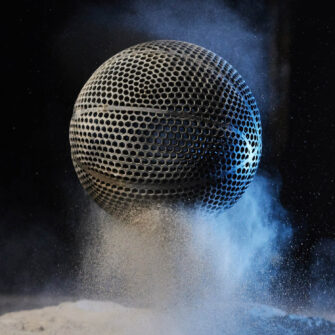
The use of 3D printing as the manufacturing method gave Wilson unprecedented design freedom compared to traditional ball manufacturing. EOS produced the prototypes using an EOS P 396 printer.
DyeMansion, known for its surfacing and colouring solutions, added the finishing touches to the basketball. The company’s VapourFuse Surfacing and DeepDye colouring technology created a smooth finished surface and a vibrant outer skin, ensuring the prototype met Wilson’s expectations in terms of appearance and quality.
Lighter, stronger and more durable sports equipment is a goal across all sports, with basketball proving that even a sport that requires very little equipment can develop new ideas and innovations through industry partnerships and specialists.
A statement from Wilson notes that, while the 3D-printed airless basketball may not be coming to a professional court any time soon, it still represents a breakthrough, because even small details can have a profound impact on performance and player experience.
“There’s still work to do before it’s ready for courts around the world, but we’re thrilled by the possibilities this ball represents: possibilities for other sports and future Wilson products, revolutionary sustainability through additive manufacturing, and so much more. This is innovation made to push boundaries and open imaginations.”
This article first appeared in DEVELOP3D Magazine
DEVELOP3D is a publication dedicated to product design + development, from concept to manufacture and the technologies behind it all.
To receive the physical publication or digital issue free, as well as exclusive news and offers, subscribe to DEVELOP3D Magazine here

